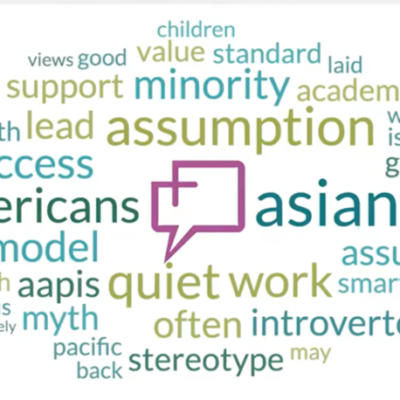
By Marissa McGee
Disclaimer: As a fan of the Golden State Warriors, the views expressed in this article may be biased towards the blue and gold. Apologies in advance to fans of the Sacramento Kings, Los Angeles Lakers, and LA Clippers. I promise not to let my team spirit get in the way of the commitment to diversity, belonging, and inclusion that I am trying to convey. After all, when it comes to education, we’re all on the same team.
In the world of education, fostering diversity among educators cannot be just a buzzword; it’s a necessity. As the Golden State Warriors aptly put it, there is “Strength in Numbers.” The same principle applies to education, emphasizing the importance of a collective force rather than relying on a solitary presence. The significance of recruiting and retaining educators of color can draw parallels with the Warriors’ slogan and shed light on the distinctions between diversity, belonging and inclusion.
Strength in numbers
Imagine being the only person of color in a staff meeting, constantly feeling the weight of being the sole representative for an entire demographic. While diversity and progress should be celebrated, the reality is that being the lone individual can feel isolating and overwhelming. The Golden State Warriors’ success is rooted in the belief that a team’s strength is derived from the diversity of its members, each person contributing unique skills and perspectives. Similarly, a school’s success is intricately tied to the diversity of its educators. The idea here is not just to have one BIPOC (Black, Indigenous, and People of Color) representative but to build a team that thrives on the collective strength derived from a myriad of perspectives, backgrounds, and lived experiences.
Diversity, belonging and inclusion
It’s crucial to recognize the distinctions between diversity, belonging and inclusion. Diversity is about representation, but true progress goes beyond numbers. Diversity is futile without belonging. Belonging ensures that every educator feels a strong sense of connection and can show up as their authentic selves. Inclusion goes further by actively involving educators in decision-making processes. One quick way for administrators to gauge the culture of inclusion is by ending staff meetings by asking if everyone felt their contributions were acknowledged and valued. For educators of color, it’s not just about having a seat at the proverbial table; they must be valued and treated as an integral part of the educational community.
Practical tips for recruitment and retention
1. Engage in reflection: Recruitment and retention of BIPOC educators must begin with reflection. It remains important for administrators to engage in internal work, which can include unpacking biases, examining current practices, and/or examining intent and impact. To illustrate the importance of this inner work, let’s surface how an administrator’s actions can impact “the only one” on their team. Educators of color might be subjected to more scrutiny than their White counterparts; this can present itself in very subtle ways, like administrators tracking the participation of BIPOC educators during meetings but not doing the same for White educators. The expectation to contribute, sometimes spoken and unspoken, can lead to anxiety and participating just for the sake of getting a tally mark. While the intention of tracking participation or telling BIPOC educators to speak up more might be to make sure all voices are heard, it is important to consider the impact. Before we embark on recruiting BIPOC educators, we must explore the impact of our actions on workplace culture, conditions and expectations.
2. Revisit outreach efforts: Develop comprehensive outreach strategies that extend beyond traditional channels. Collaborate with diverse educational networks like local groups for BIPOC alumni. Attend career fairs that attract candidates from the global majority. Leverage social media by sharing stories and testimonials from educators representing diverse backgrounds. When engaging in storytelling, it is important to capture educators’ successes and challenges to provide an honest narrative. Outreach efforts should increase access and actively seek candidates from communities that have been historically underrepresented. By making deliberate efforts to increase access, educational institutions can tap into a wealth of talent and perspectives.
3. Mentoring programs: Implement mentoring programs specifically designed for BIPOC staff. Pairing new educators with experienced mentors can provide guidance, support and a sense of community, aiding in recruitment and retention. BIPOC educators entering the profession often face unique challenges that result from the intersectionality of their identities and being new to education. So having a mentor who empathizes can make a huge difference. These mentors can provide professional guidance and offer insights into navigating the cultural dynamics within an institution. A mentoring program can become a system where educators can share experiences, seek advice and celebrate successes. Prospective candidates, particularly from communities that are underrepresented, may see the presence of these programs as indicators of a supportive workplace.
4. Affinity groups: Affinity groups can play a pivotal role in supporting a sense of belonging for BIPOC educators. These groups are a space where people with shared lived experiences and backgrounds can connect and support each other. Affinity groups can serve as a source of camaraderie and empowerment, fostering a strong sense of community within the institution. Additionally, affinity groups can reduce feelings of isolation. This represents one way to cultivate an inclusive culture.
5. Leadership pathways: Equitable leadership opportunities for educators of color are a critical component of recruitment and retention strategies. Not only should BIPOC educators join the team, but they should have opportunities to lead it. Ask yourself, how are people in your organization promoted? What trends do you notice? What barriers to leadership might be inadvertently perpetuated by current practices? These are just a few questions to consider as you focus on increasing access to leadership.
Conclusion
Recruiting and retaining BIPOC educators is not just about meeting diversity quotas; it’s about building a community that thrives on the collective strength of its members. Embracing the principles of diversity, belonging and inclusion creates an environment where educators of color can thrive. By implementing practical strategies, schools can work towards a future where every educator feels valued, supported and like an integral part of the educational tapestry. Strength isn’t solely in numbers; it lies in making sure people feel a strong sense of belonging where they can show up as their authentic selves and contribute meaningfully.
Marissa McGee is an author and Coordinator of Diversity, Equity, and Inclusion with Menlo Park City School District and Ravenswood City School District.








Leave a Comment